Joffre Peak

Date: April 13, 2025
Distance: 15km
Elevation gain: 1500m
At 2,721 metres, Joffre Peak is one of the taller summits in the Joffre Group. It rises above the Matier Glacier to the east of Joffre Lakes and can be climbed by several routes. While there's a summer scramble described in Scrambles in Southwest British Columbia, most people reach the summit in late winter or early spring via the Aussie Couloir. This classic beginner-friendly mountaineering line climbs over 450 metres at a steady 40 to 45 degrees.
I climbed Joffre Peak via the Aussie Couloir with Steven and Xinran. This would be my first time climbing a couloir for such a long time, and I was stoked about the trip. In the end, the experience was incredibly rewarding, but it also became a strong reminder of the risks that come with traveling in the mountains.
My alarm went off at 12:40am. I drove up to Squamish, met Steven and Xinran there, and we arrived at the Joffre Lakes parking lot just before 4am. The Aussie Couloir can be accessed from the west (Joffre Lakes) or northeast (Cerise Creek) and we took the former approach.
We navigated the Joffre Lakes trail in the dark, my first visit to the lakes in over 15 years. It was quite icy; microspikes would’ve been ideal, but snowshoes did the trick. By starting at 4am we successfully avoided the crowds.
By the time we arrived at the upper lake, it was just barely bright enough to see without headlamps. I have to admit that the view of the lake and its ring of mountains was quite spectacular.
Our next challenge was getting to the Matier Glacier, almost 400m above the lake. We crossed the lake under the moonlight, reaching a small bench on the other side, the base of a lateral moraine formed when the Matier Glacier reached the lake. From here you could either climb the moraine or ascend parallel to the moraine’s base. The first option involves some steep sidehilling to rejoin the route after the moraine, so we chose the second option, following BestHikesBC’s route.
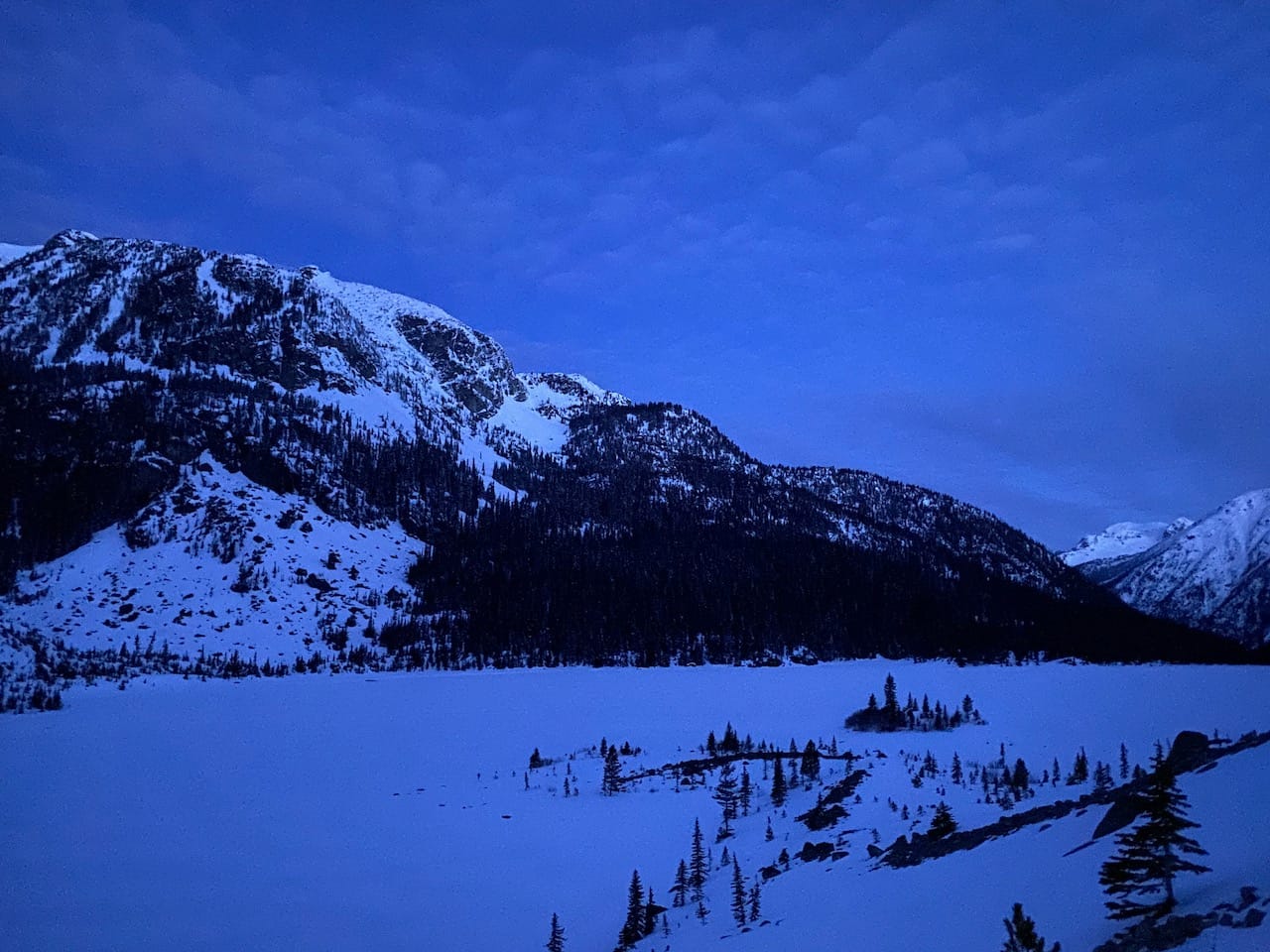
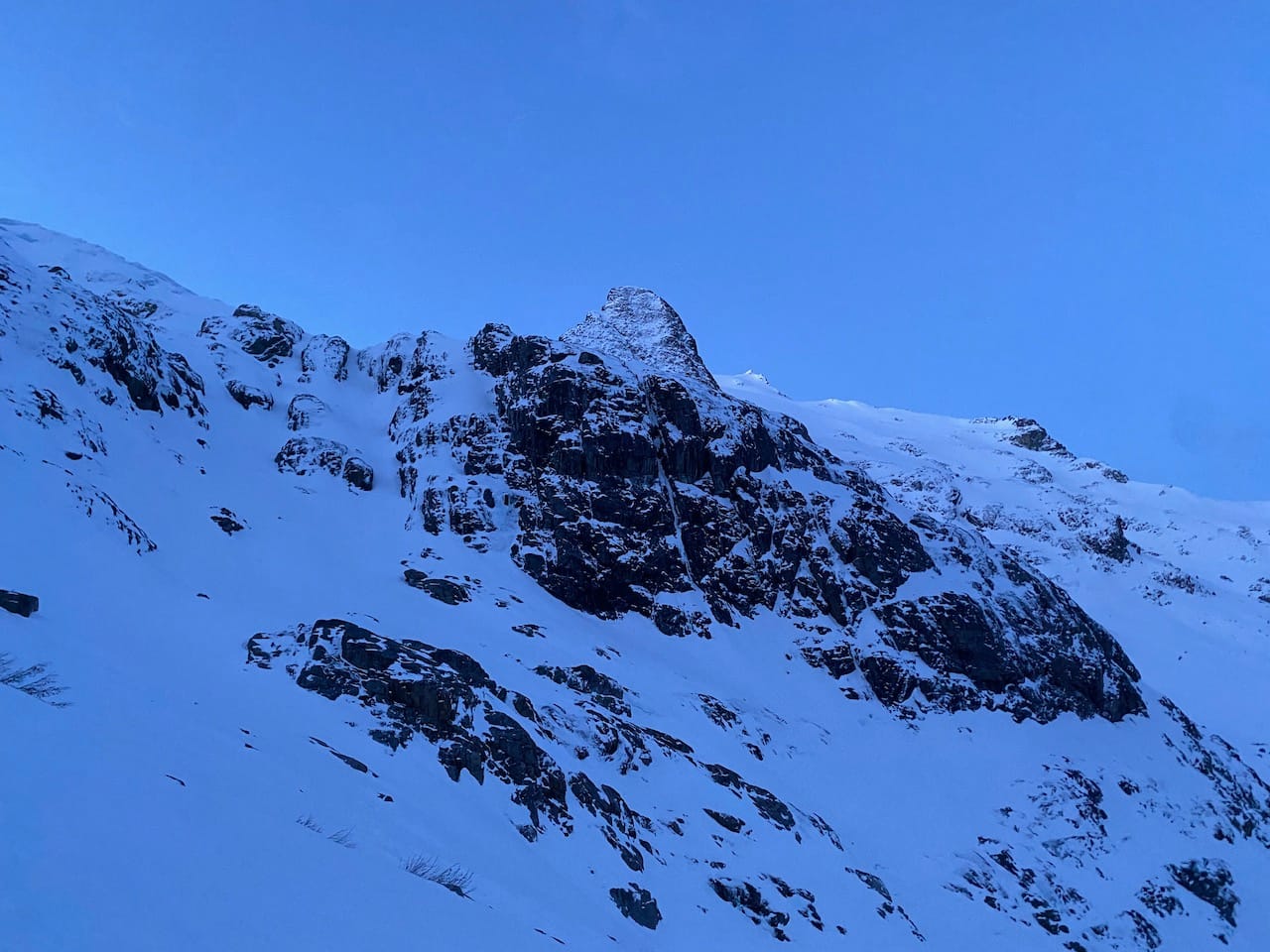
As we ascended, the views of the upper lake and Cayoosh Mountain across the valley became even better. The sun rose.
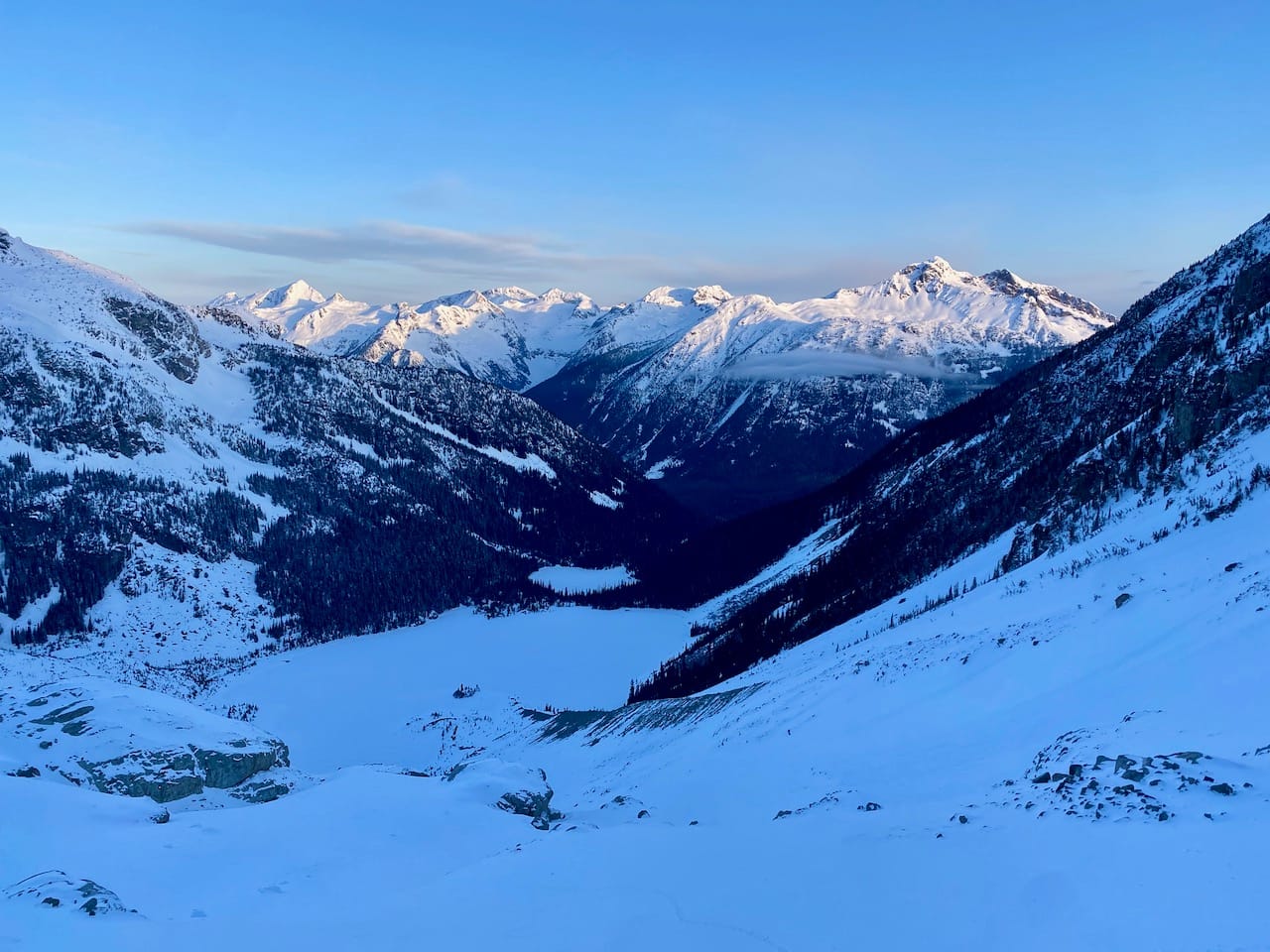
Above us was the end of the glacier, a jagged wall of snow-covered seracs. Avoid spending time directly below the seracs.

After negotiating a few steep sections, we emerged onto the glacier, a massive expanse of snow surrounded by giant peaks.
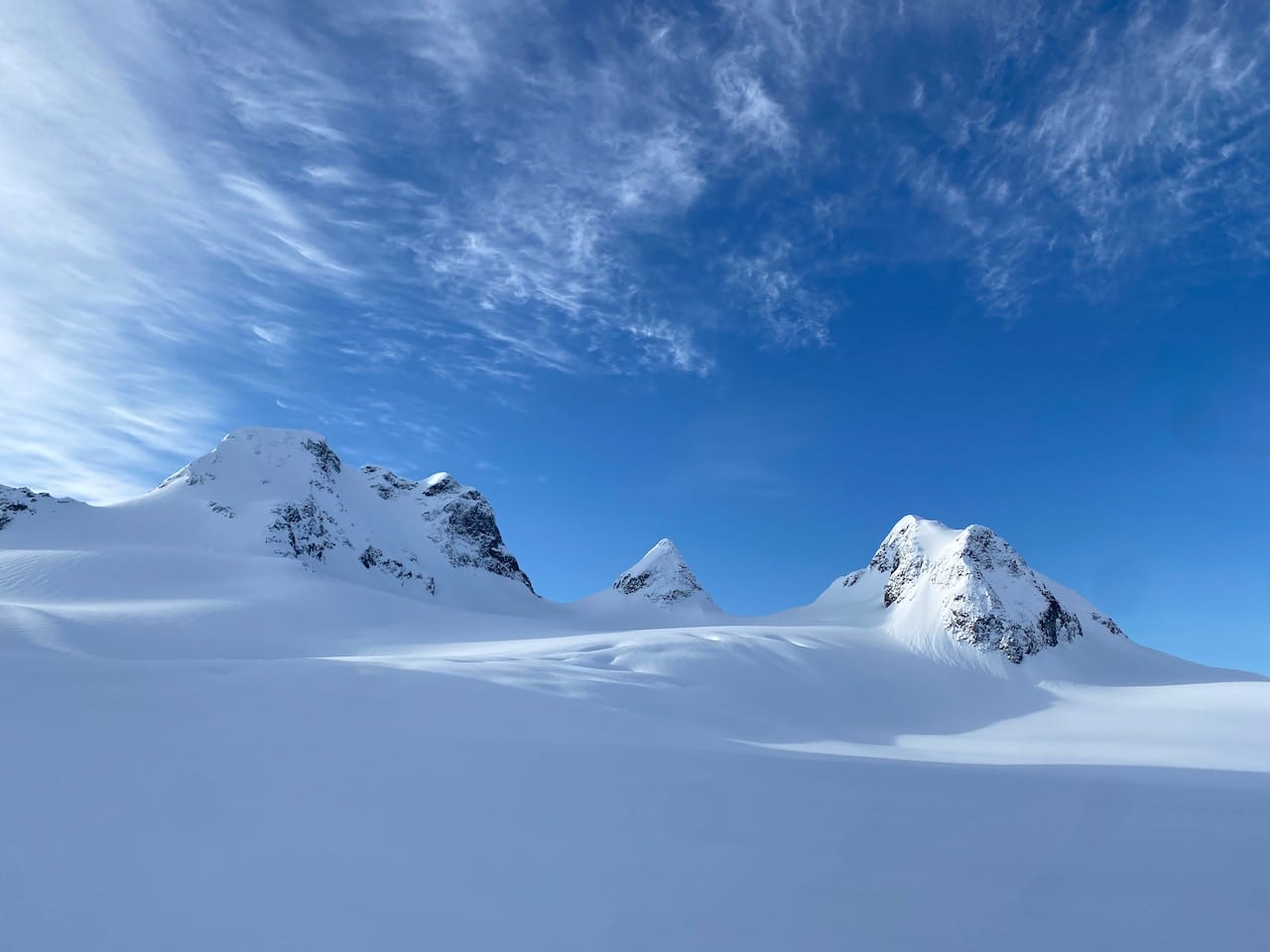

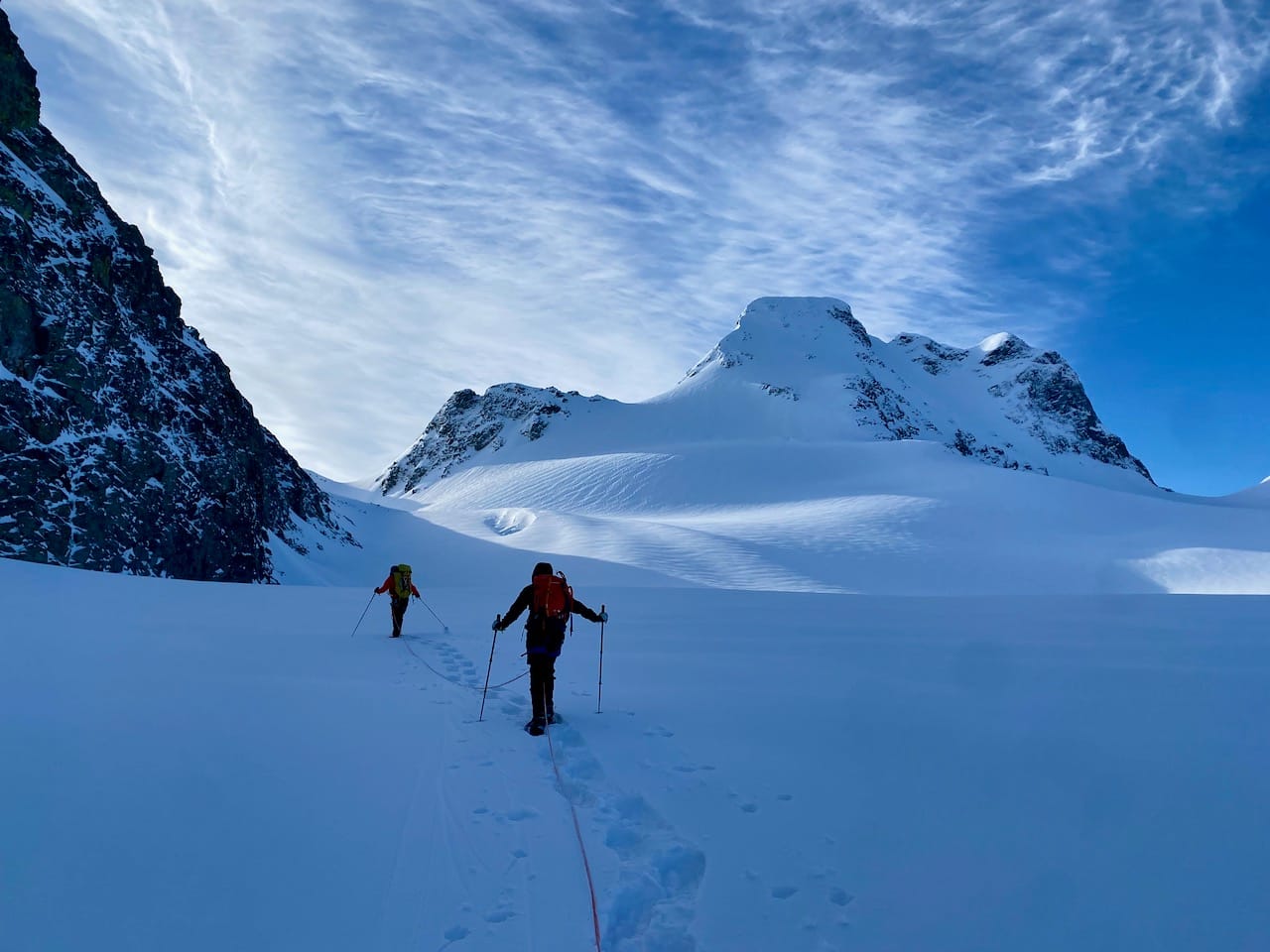
We roped up and made our way to the couloir. We were the first group on the glacier, but the snow was quite solid and trailbreaking was easy enough. The couloir was hidden from view until the last second.
We arrived at the base around 8:20am. In retrospect we should have arrived about an hour earlier.
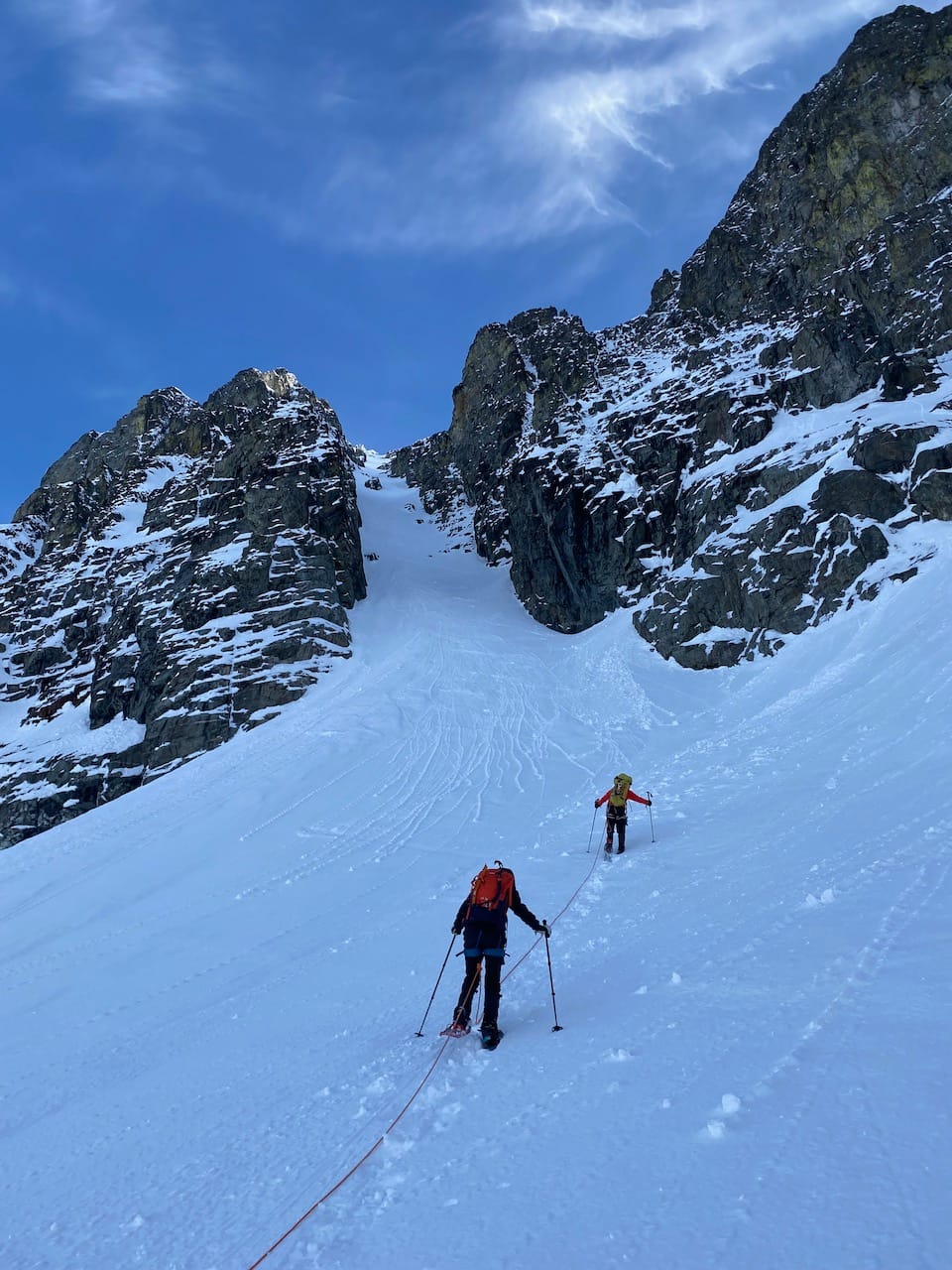
We put crampons on and began the long climb. In the shade, the snow was well-consolidated and held my weight well. There was nothing to do but climb this seemingly endless couloir for hundreds of metres. Behind me, the view of the glacier and its associated peaks got better and better. I didn’t want to look down…
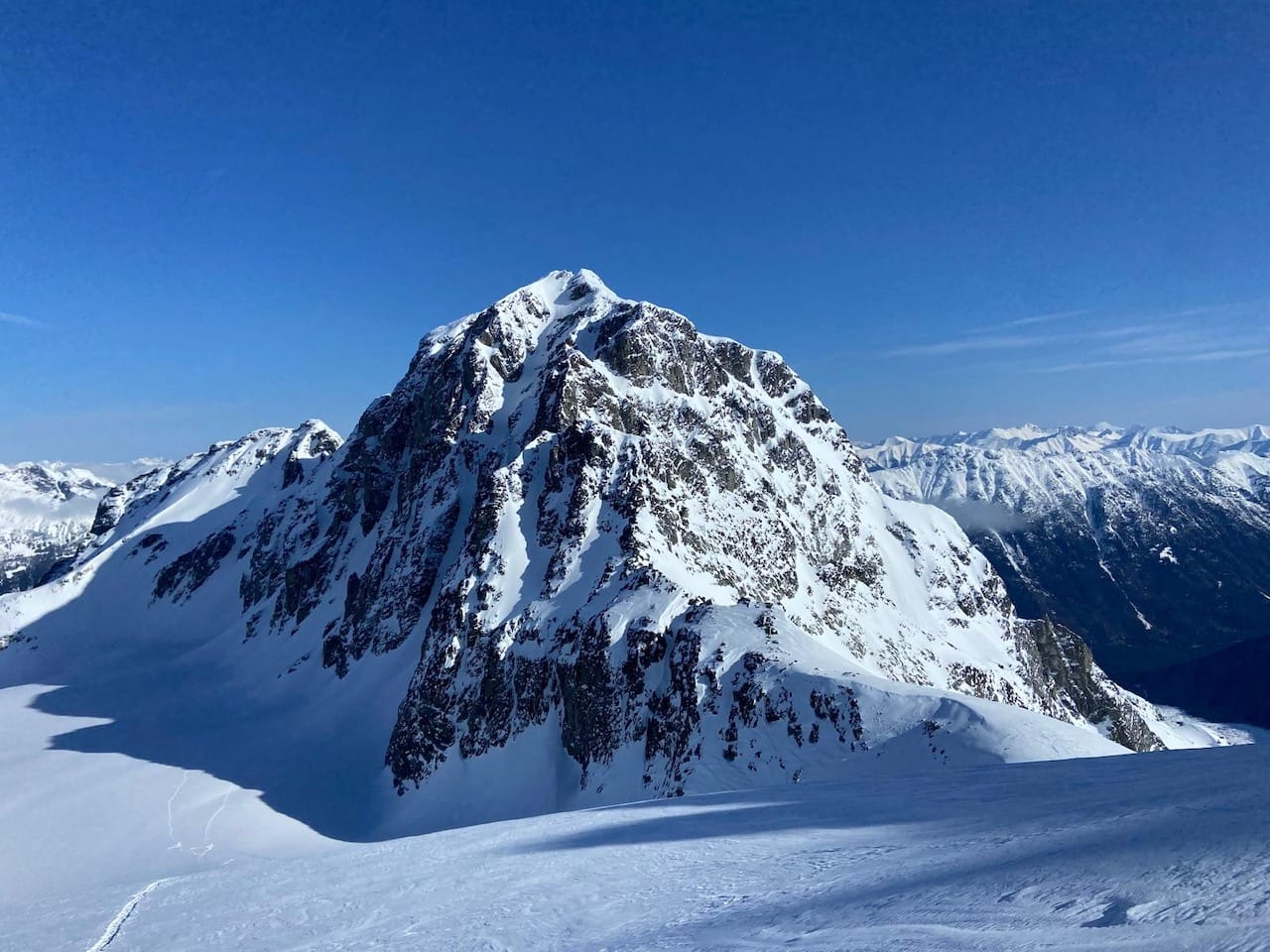
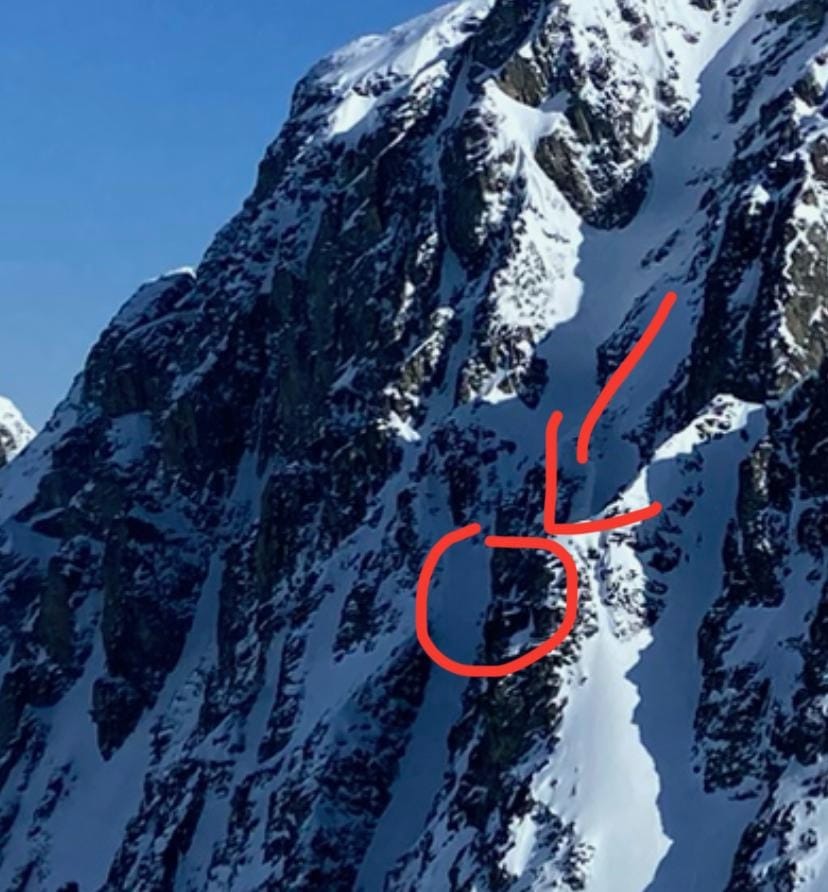
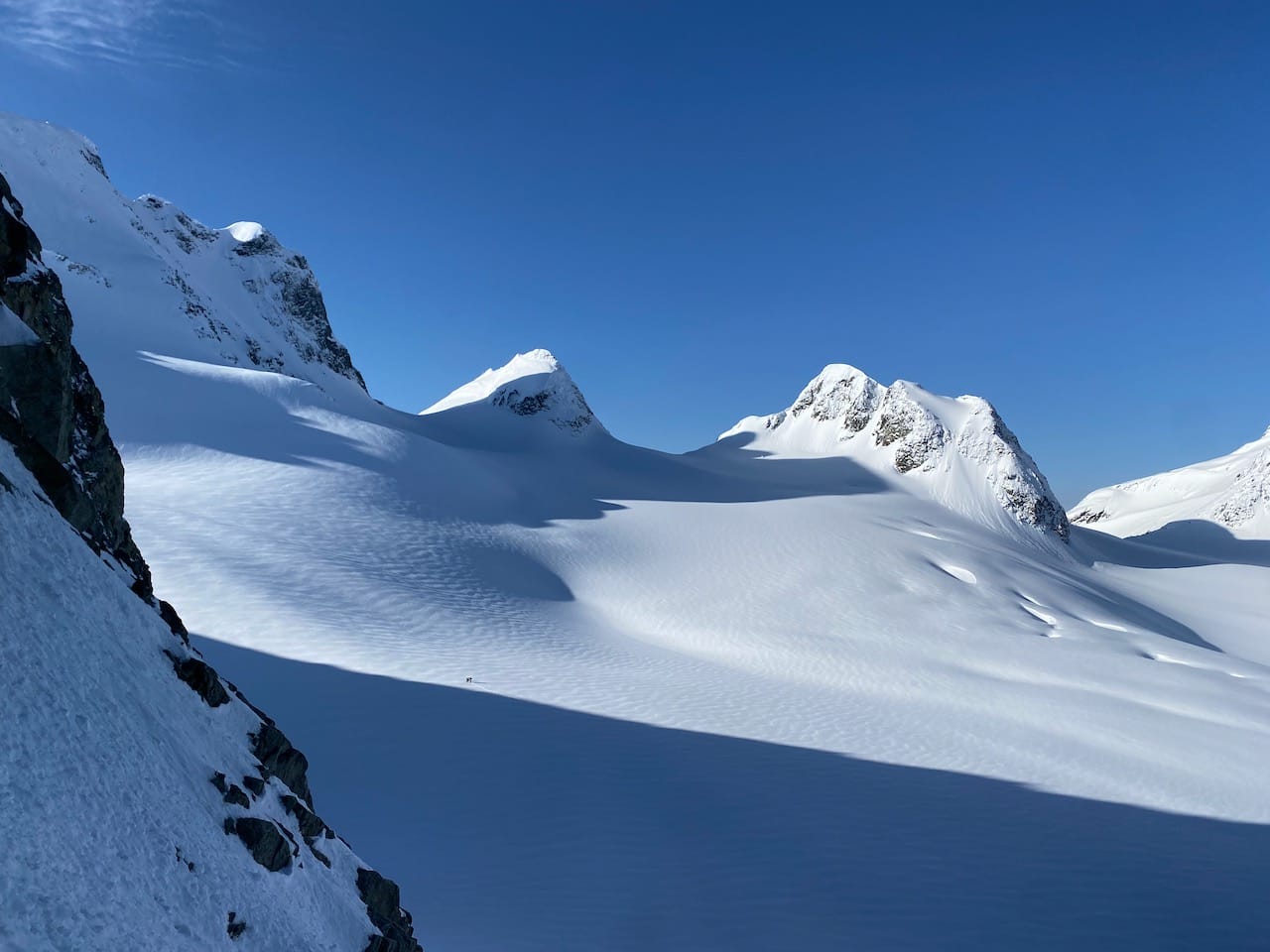
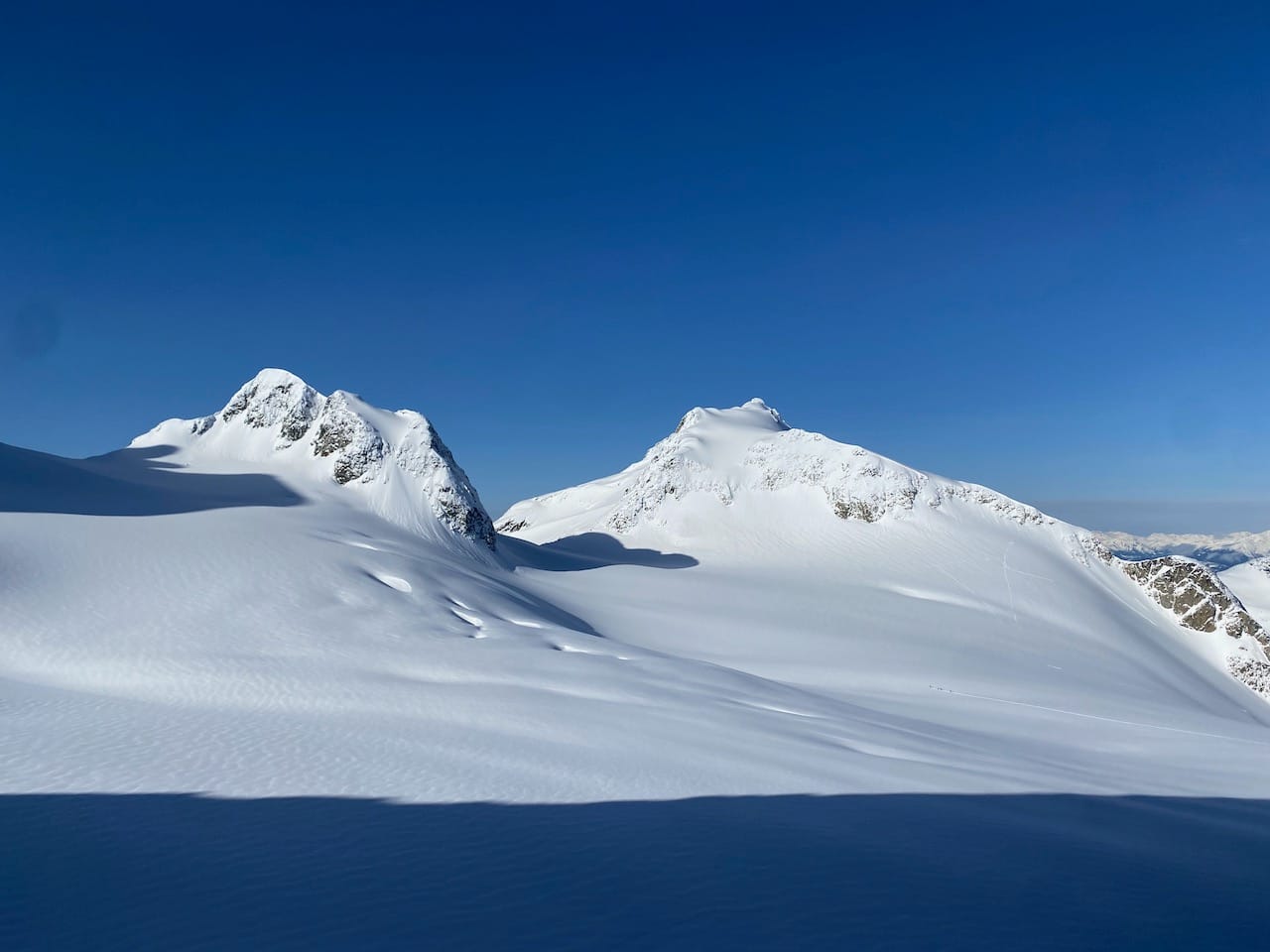
Near the top, we emerged from the shade into much hotter temperatures. At one point I hugged the snow to stay cool.
The top of the Aussie Couloir seems to split into two, with the correct route going to climber’s left (west). These last few metres were the steepest part of the couloir. Eventually I made it to a perch on the ridge, relaxed, and enjoyed the views across the glacier. In the distance several groups were on their way to Mount Matier.
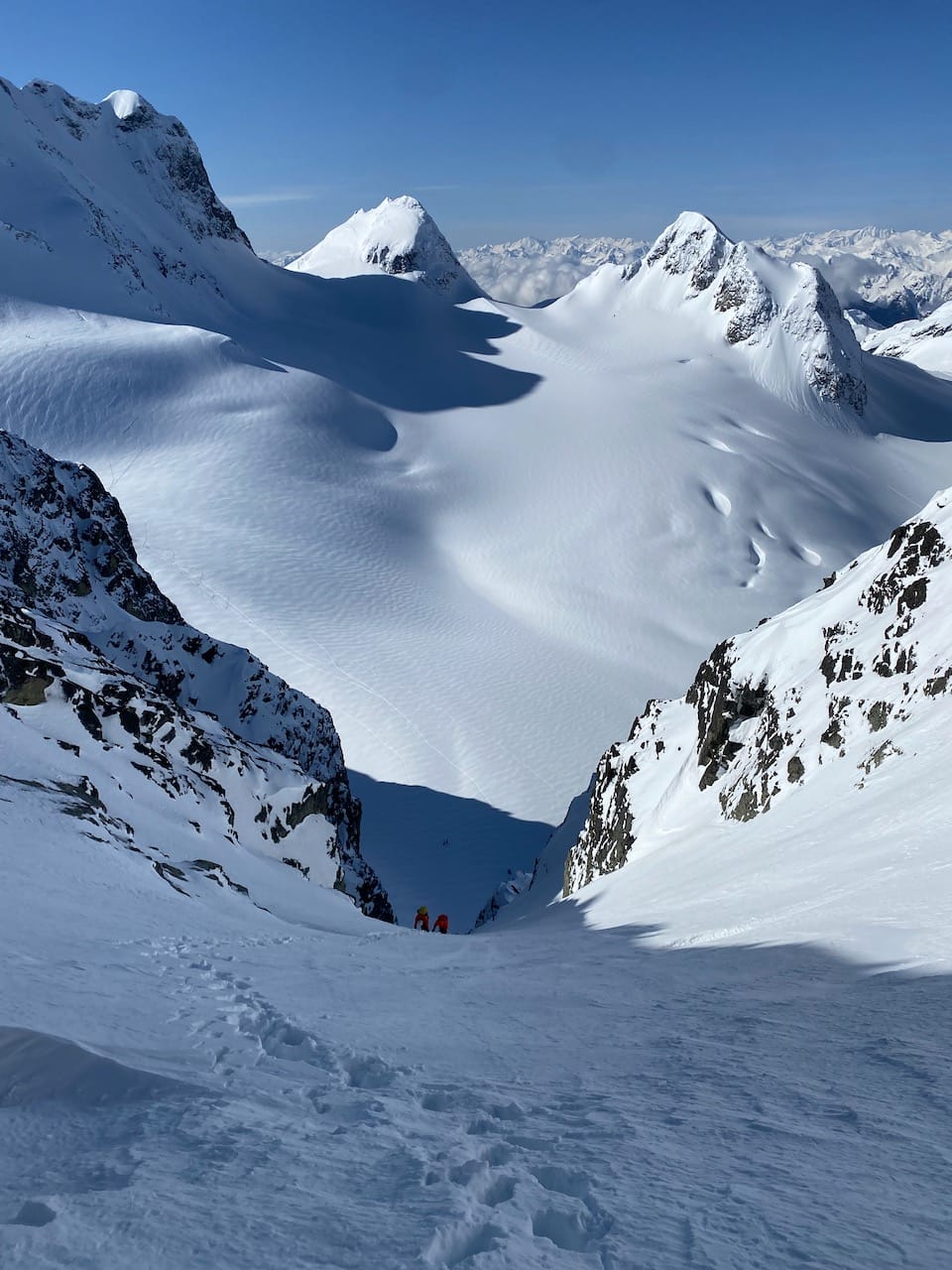
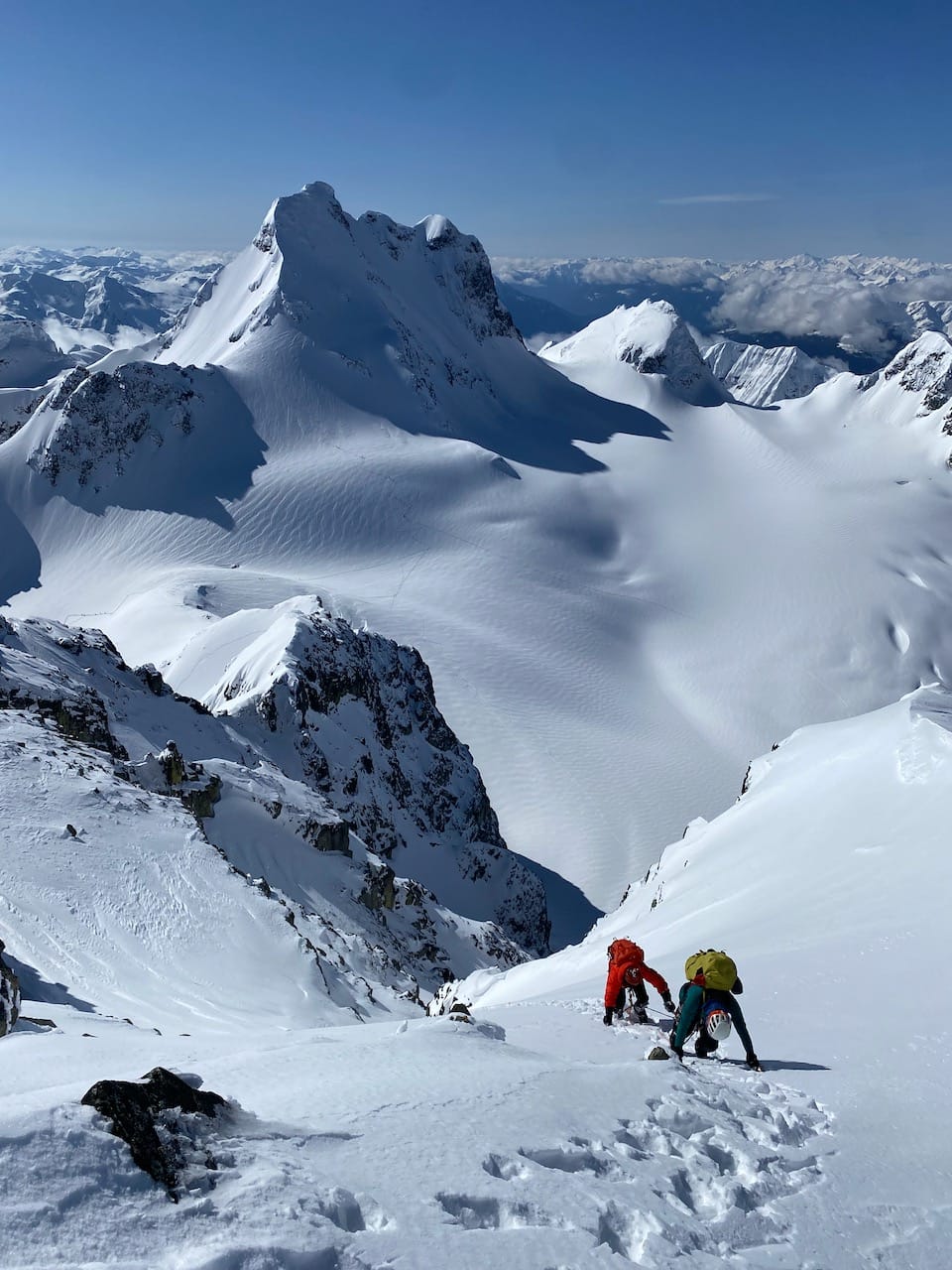

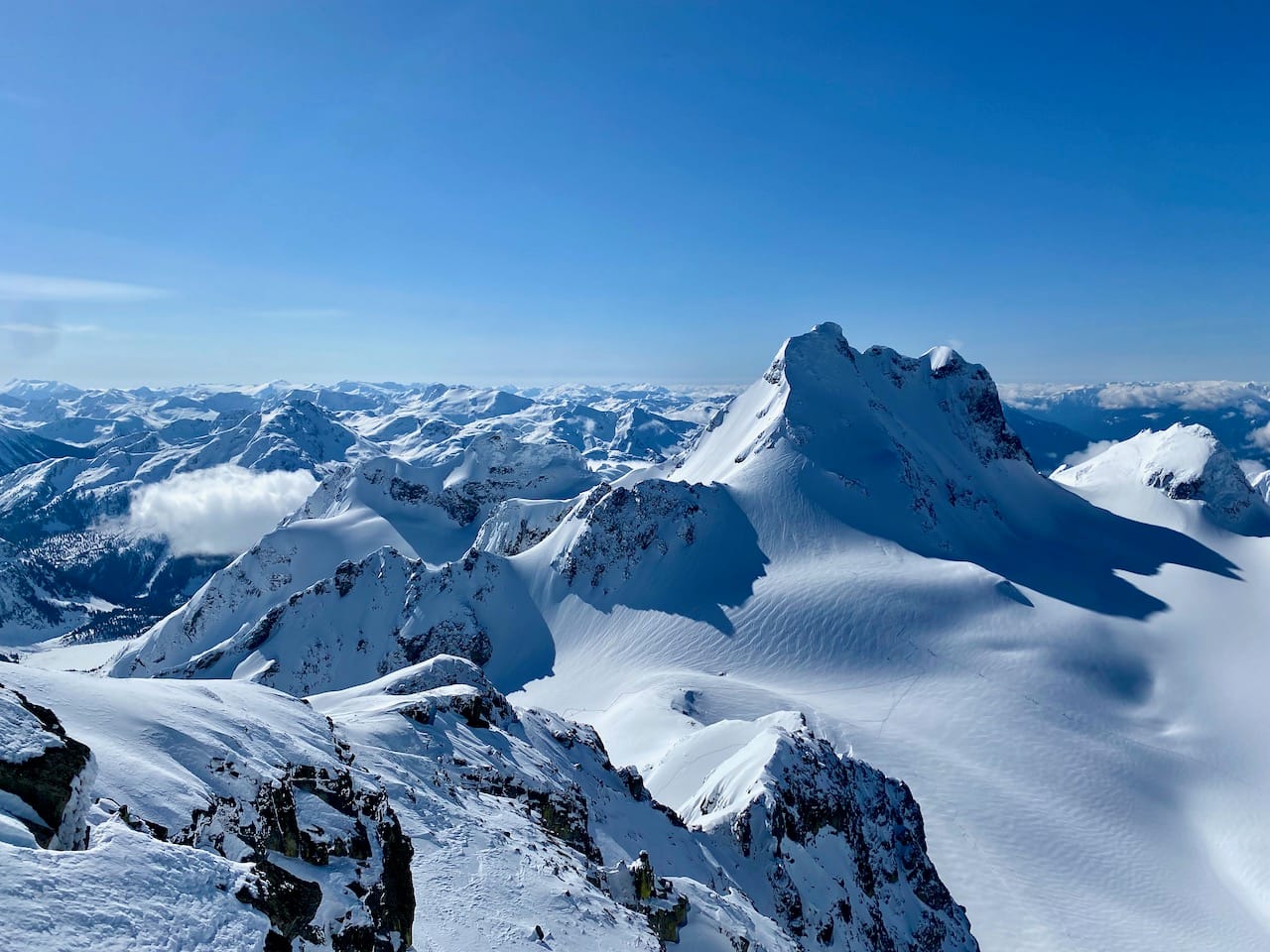
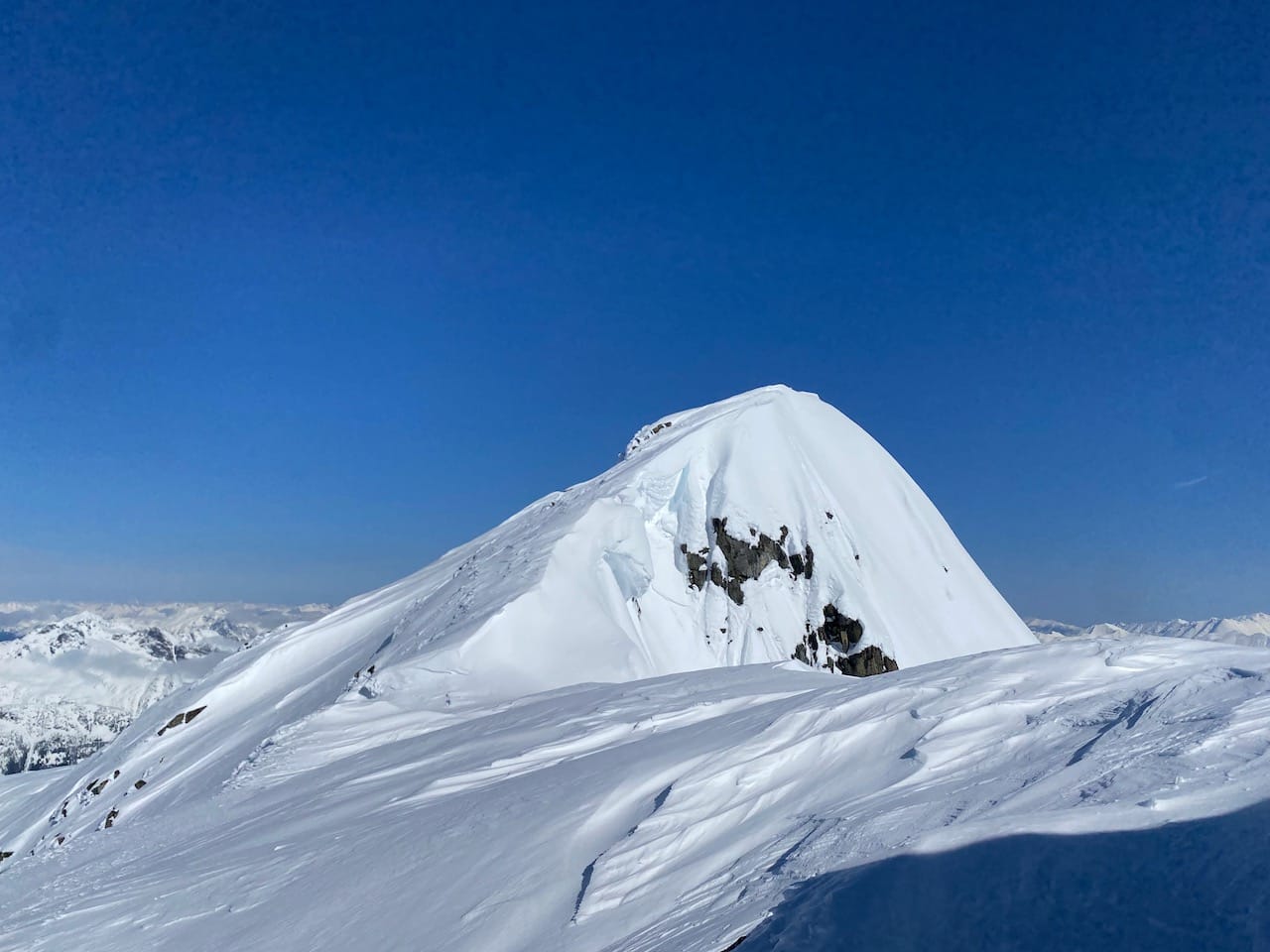
We regrouped at the flat spot and traversed to the true summit, only a little further along the ridge. To avoid cornices we stayed well to the left (west) of the ridge crest.
The northern side of Joffre Peak consists of several cliffs. In 2019 two massive landslides completely reshaped the peak and the valley below it. Geological time includes now.

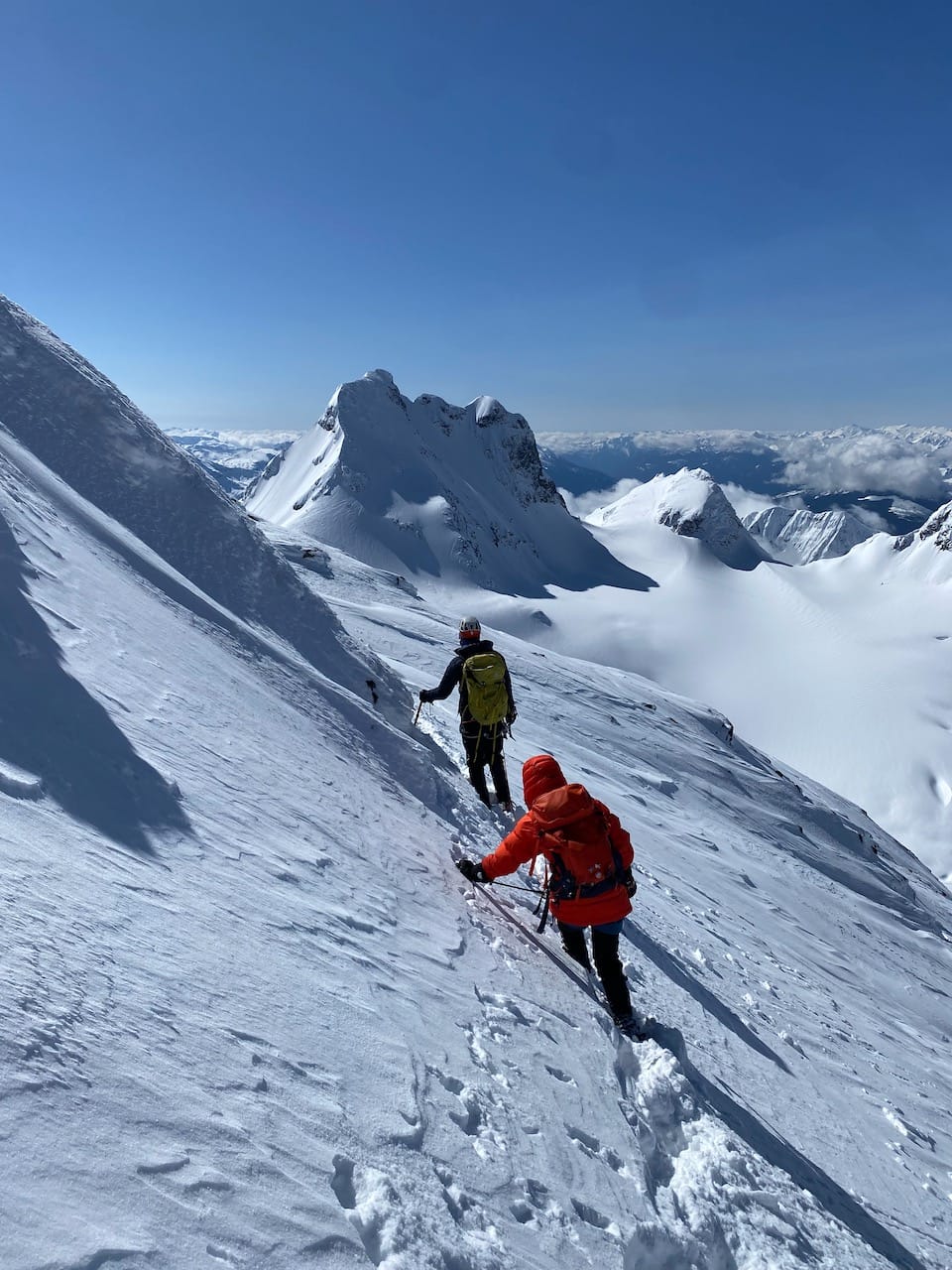
After tagging the summit we retreated to the flatter area at the end of the couloir, where we were joined by two large groups of skiers. Many of them recognized Steven from his blog. Apparently this sort of thing happens to him all the time.
We decided that Xinran would rappel down and Steven and I would downclimb. Steven started setting up an anchor.
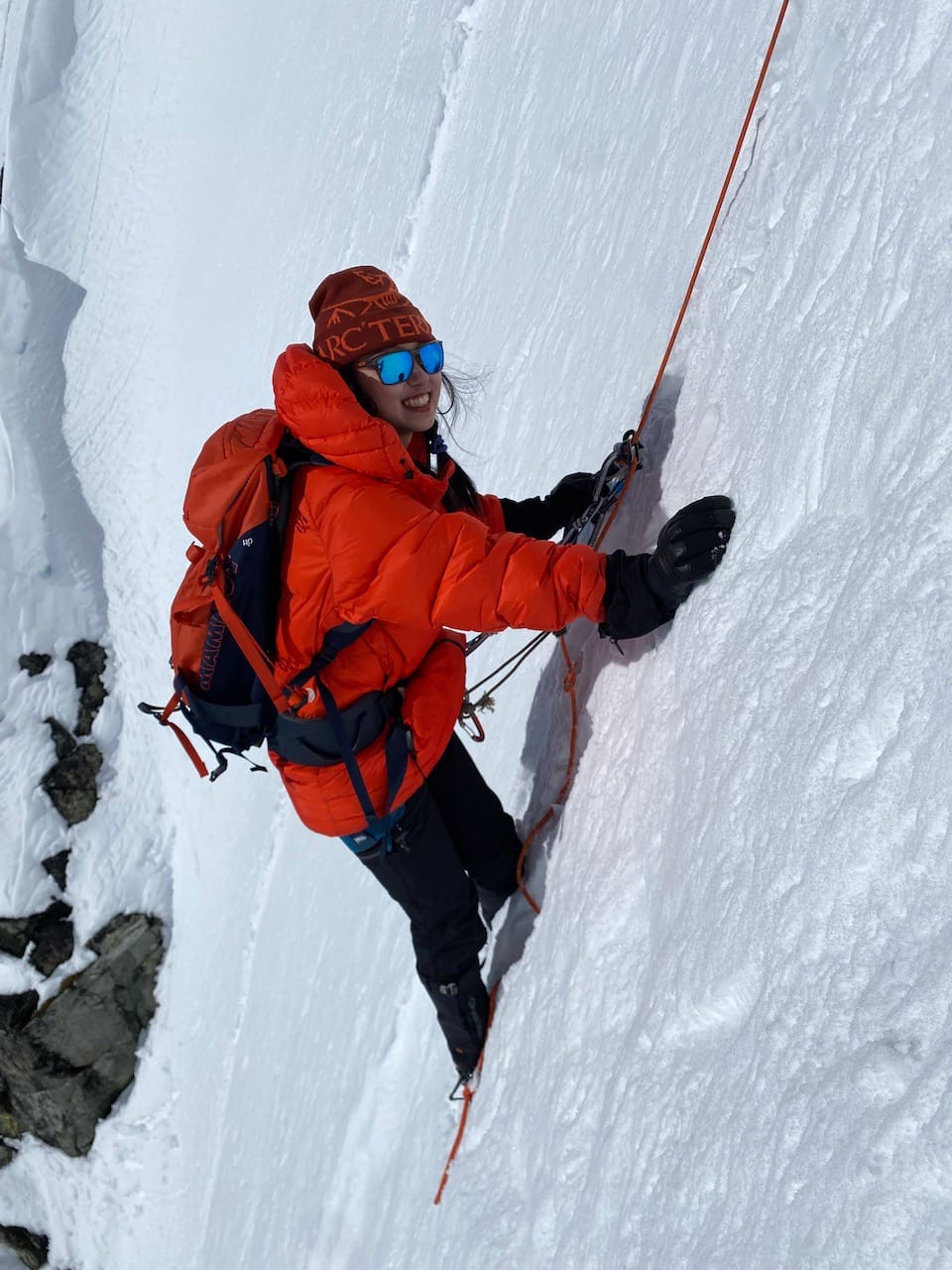
(Note to my mother: Skip the next few paragraphs)
Around 11:45am we heard a very loud cracking noise, like a gunshot, behind us. The cornice had broken off the ridge and fallen hundreds of metres into the Cerise Creek valley! No one was hurt but some gear was very close to the cliff edge. It was time to get out of there.
The first group of skiers left immediately. The second group was still transitioning and would take a long time so Xinran and I began to descend. We planned to get 1 rope length down, reach a sheltered spot, and let the skiers pass us whenever they were ready. As Xinran approached the end of the rope, two skiers appeared at the couloir entrance and waited. Steven disassembled the anchor and started downclimbing.
A slab of snow broke off at the top of the couloir, turning into a small avalanche. It barely missed me, but the rest of my group was caught in the slide path. They were swept about 50-60m downslope before Steven managed to self arrest. Steven’s backpack was out of reach, tumbling down the couloir until it was out of sight.
I retrieved Steven’s glove and ice axe, embedded in the snow wall, then began descending the couloir. Steven and Xinran were still roped up, so we quickly built an anchor to give him a safe way down. He downclimbed to Xinran and dug her out. They found a sheltered spot below some rocks, and I made my way down to join them. Once we were settled, I waved the skiers behind us to pass. Somehow, no one was hurt.
Once the skiers were safely out of the way, I went to search for the backpack while Steven and Xinran kept rappelling. I continued climbing down the endless couloir, but there was no sign of the pack. A group of skiers told me they’d seen it bouncing off a rock on its way toward the glacier; it would be too risky to search the glacier solo so I decided to wait. The pack contained car keys. If we couldn’t find it, we would have to ask for a ride back from Joffre Lakes, of all places - something I was not looking forward to.
I waited in the sheltered area at the base of the couloir. At one point another small avalanche was triggered far above me, sending a pair of sunglasses tumbling downhill.

Eventually we regrouped and made our way to the glacier. Gear from the bag was scattered over a large area but we managed to find most of it.
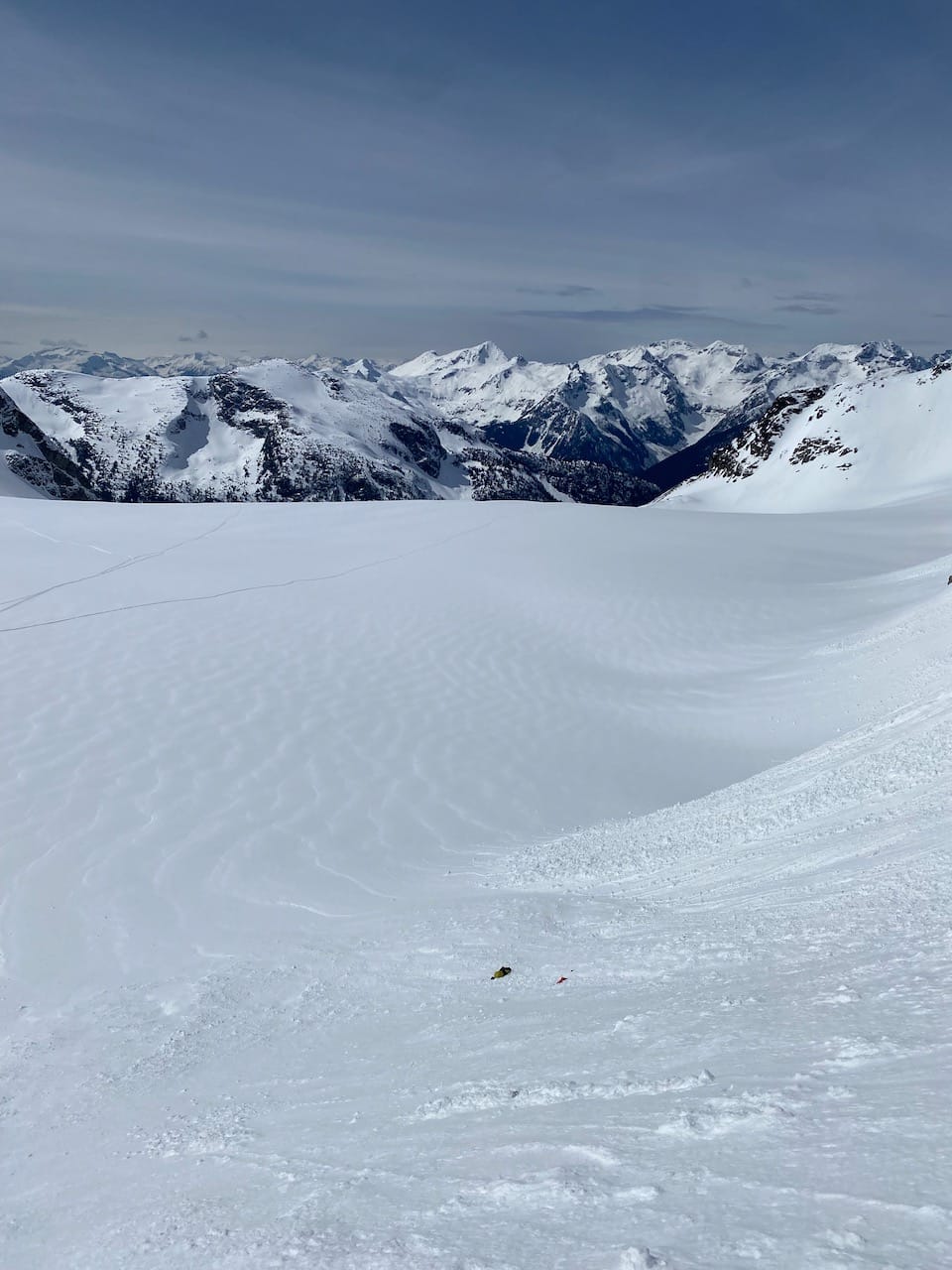
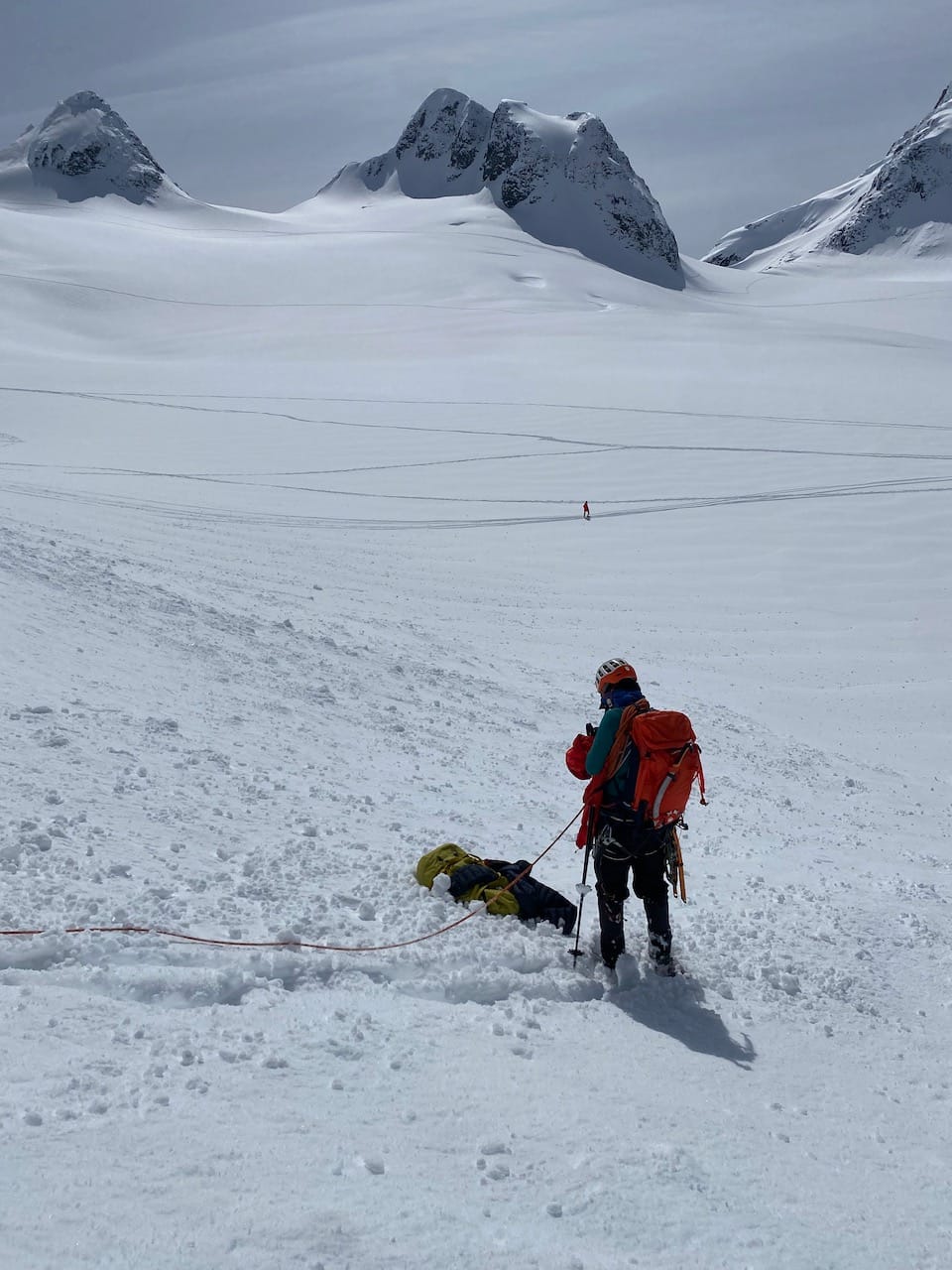
We’d considered climbing more peaks earlier, but by this point no one was in the mood. We began the long plod back to the car. Above us, a ring of light surrounded the sun, a rare optical phenomenon known as a sun dog.
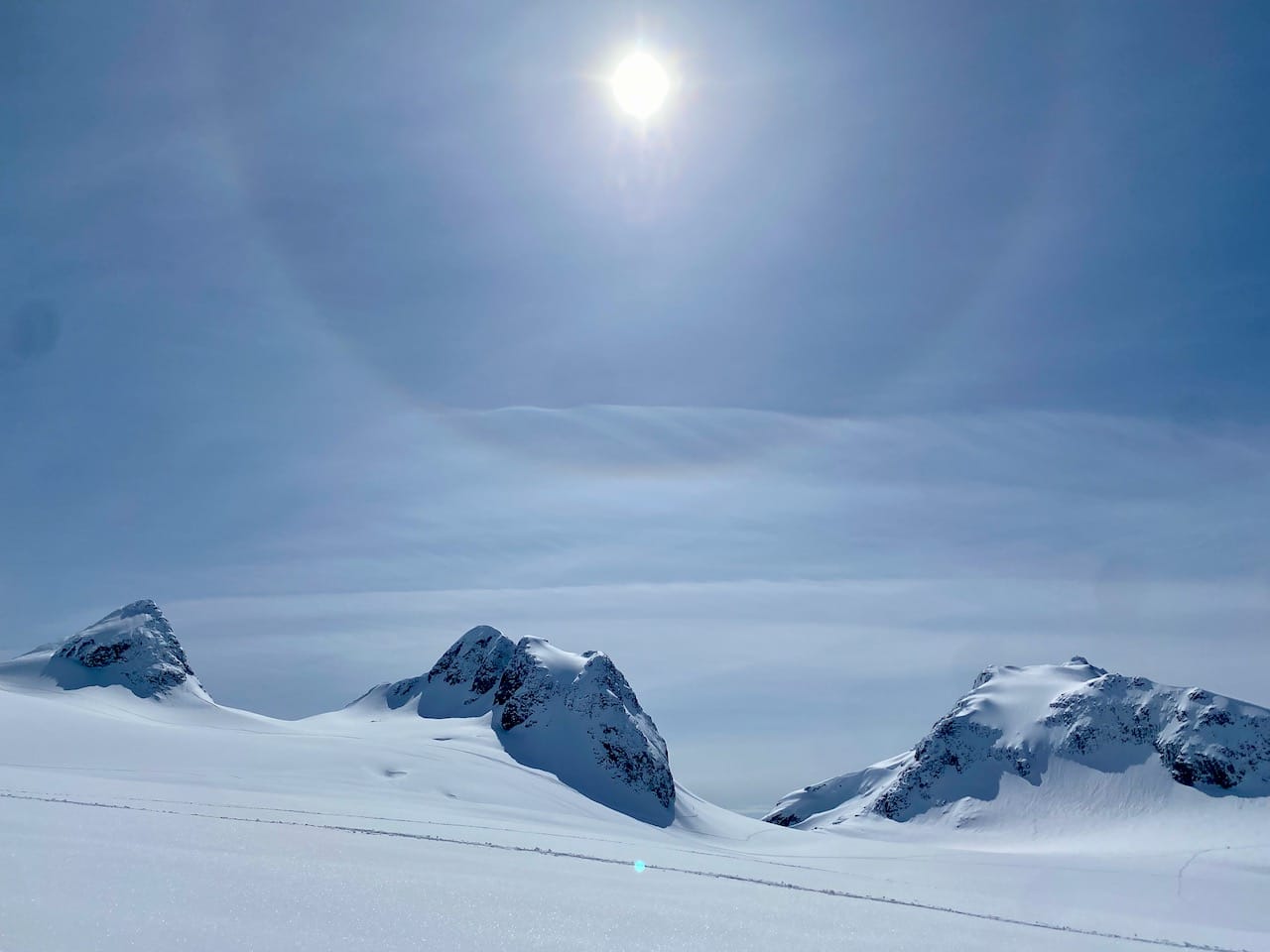
The descent to the lakes was annoying. Heavy snow stuck to the back of my snowshoe, making it feel like I was descending on high heels. We made it to the lake, which had one small patch of open water. The ice held our weight.
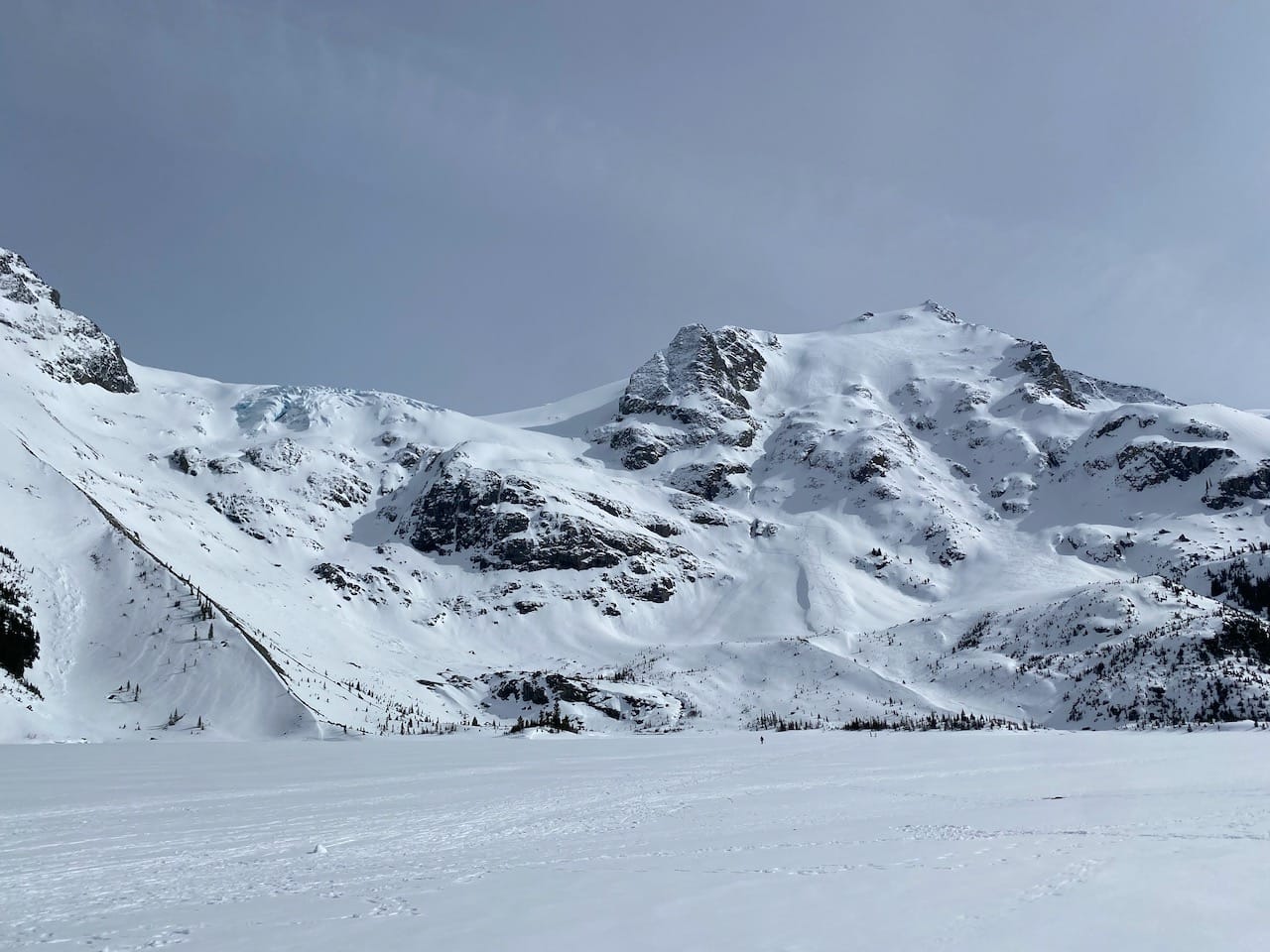
From then on, our biggest challenge was dodging the hordes of tourists on their way to the lakes. Eventually we reached the car and headed south. It was difficult to stay awake but I eventually made it home.
This was an amazing and rewarding day in the mountains, but also a humbling experience. The Joffre Group is a place of incredible beauty, but also one that requires respect. We should have arrived earlier, or on a less warm day, and avoided the unstable snow.
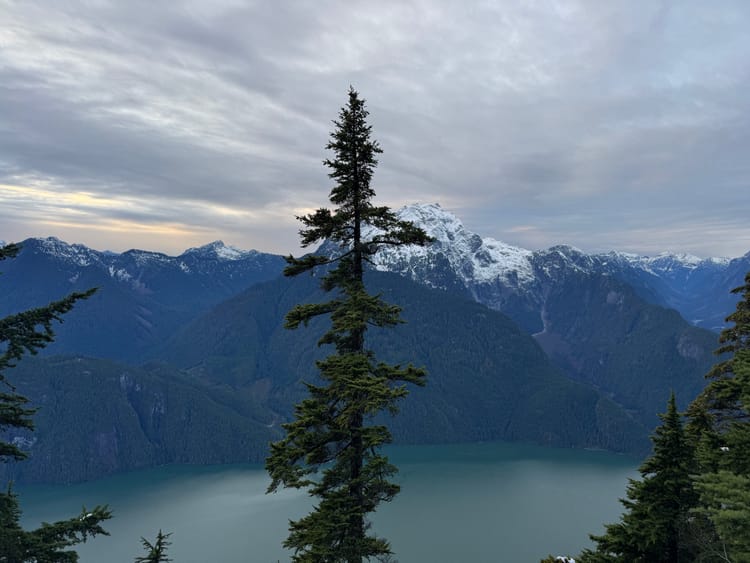
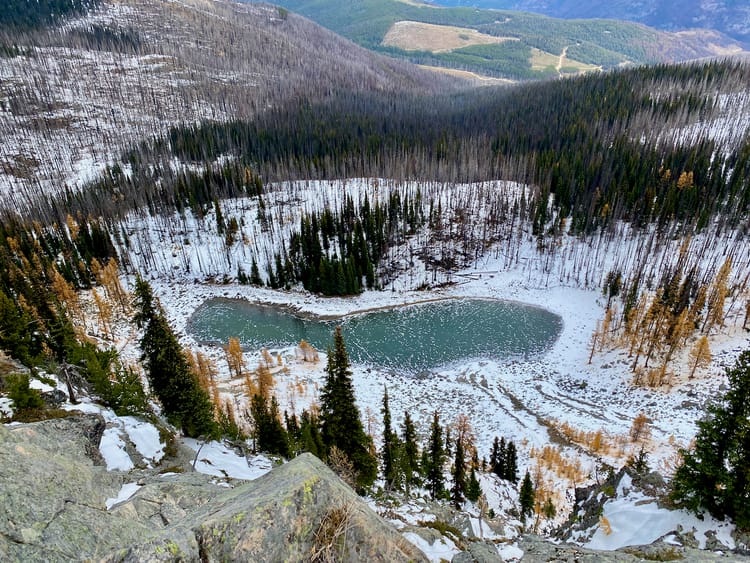

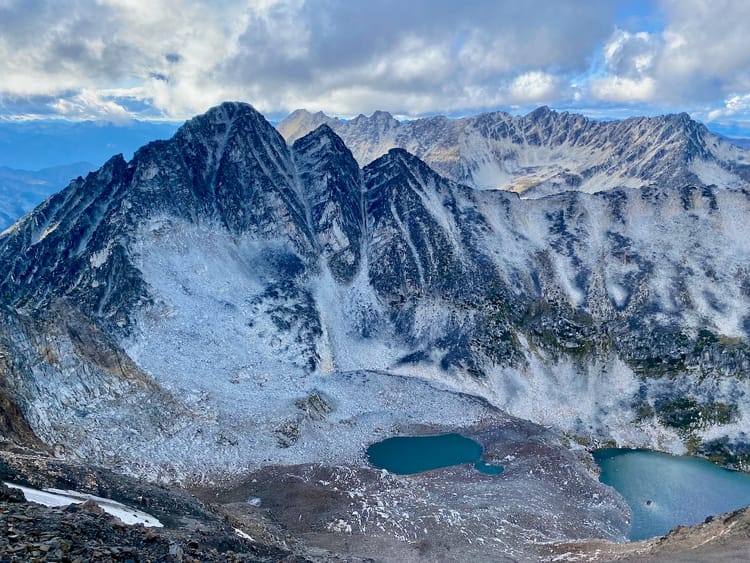
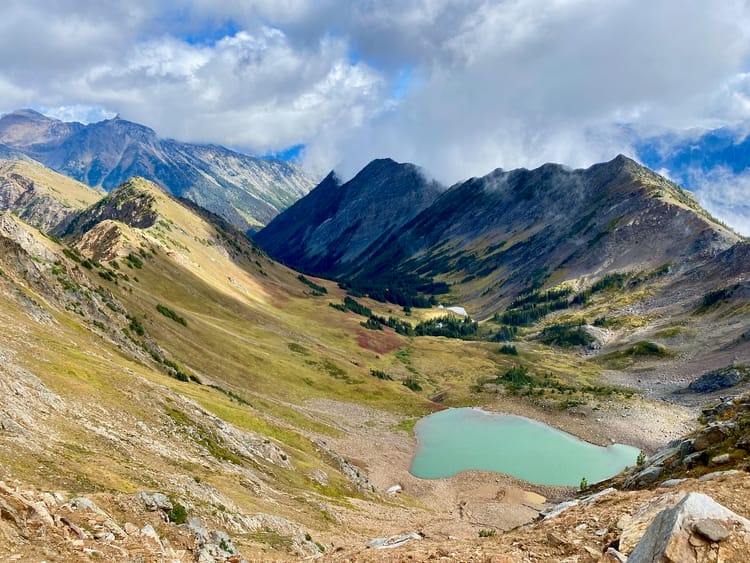
Member discussion